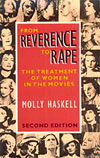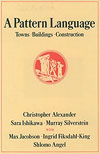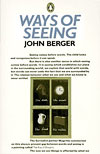
From Reverence to Rape
By Molly Haskell
I've always been interested in feminism, but in the early 1990s, I was probably a little more hungry for it because that's when I was forming my identity in the film business. I would read a script and think, Okay, I've got a problem with this. But I couldn't articulate what I didn't like. Haskell's analysis of women in film helped me see that I may have been responding to a certain stereotype or to a lack of exploration of the female character. We put a lot of ourselves as a society onto film, and what I took from Haskell was that the movies are a great way to gauge where we were and where we're at.
By Molly Haskell
I've always been interested in feminism, but in the early 1990s, I was probably a little more hungry for it because that's when I was forming my identity in the film business. I would read a script and think, Okay, I've got a problem with this. But I couldn't articulate what I didn't like. Haskell's analysis of women in film helped me see that I may have been responding to a certain stereotype or to a lack of exploration of the female character. We put a lot of ourselves as a society onto film, and what I took from Haskell was that the movies are a great way to gauge where we were and where we're at.

Critical Path
By R. Buckminster Fuller
Published two years before Fuller's death, this book traces the origins of social, political, and economic systems. The chapter called "Legally Piggily" floored me. Fuller mentions how advertising is used in our culture. He gives one example of the auto industry: In the early 1940s, carmakers decided that it would be too expensive to retool their plants to make new automobiles after the war, so they hired Madison Avenue agencies to produce ads with GI soldiers saying, "Please keep everything the same at home until I return." It made me rethink the different factors that go into advertisements so that I'm not just walking blindly through life.
By R. Buckminster Fuller
Published two years before Fuller's death, this book traces the origins of social, political, and economic systems. The chapter called "Legally Piggily" floored me. Fuller mentions how advertising is used in our culture. He gives one example of the auto industry: In the early 1940s, carmakers decided that it would be too expensive to retool their plants to make new automobiles after the war, so they hired Madison Avenue agencies to produce ads with GI soldiers saying, "Please keep everything the same at home until I return." It made me rethink the different factors that go into advertisements so that I'm not just walking blindly through life.

A Pattern Language
By Christopher Alexander
When I bought my house, I couldn't afford an architect. I was overwhelmed, but I had read a quote by Alexander that I liked, so I tracked down this book. He believes that people should design their own homes, streets and communities based on certain patterns. I used his theories a lot when I was working on my house. For instance, window seats: He thinks they've got to be a certain width or people won't sit in them. My window seat was 16 inches, and that wasn't working.
I had to make it 18 inches. The book is full of recommendations—a big kitchen, windows, waist-high shelves—really basic, simple things that make an immeasurable difference in how we live.
By Christopher Alexander
When I bought my house, I couldn't afford an architect. I was overwhelmed, but I had read a quote by Alexander that I liked, so I tracked down this book. He believes that people should design their own homes, streets and communities based on certain patterns. I used his theories a lot when I was working on my house. For instance, window seats: He thinks they've got to be a certain width or people won't sit in them. My window seat was 16 inches, and that wasn't working.
I had to make it 18 inches. The book is full of recommendations—a big kitchen, windows, waist-high shelves—really basic, simple things that make an immeasurable difference in how we live.

Ways of Seeing
By John Berger
This small book was a revelation. Berger explains that the value of some pieces of art is based on more than artistic merit; a painting could be significant because it was done at a certain time. But mostly the book is about why images are so important to us. As he writes, "It is seeing which establishes our place in the world; we explain that world with words, but…the relation between what we see and what we know is never settled."
By John Berger
This small book was a revelation. Berger explains that the value of some pieces of art is based on more than artistic merit; a painting could be significant because it was done at a certain time. But mostly the book is about why images are so important to us. As he writes, "It is seeing which establishes our place in the world; we explain that world with words, but…the relation between what we see and what we know is never settled."

Memories, Dreams, Reflections
By C.G. Jung
I didn't know where to begin with Carl Jung, because his work has had such an impact on me. I've used what I've learned with my acting, with dream analysis, and to help me understand other human beings. Jung was a Swiss psychiatrist who once collaborated with Freud. As I understand it, Freud believed that a lot of our problems were related to sexual repression, but Jung, who eventually parted ways with Freud, had a broader understanding of the unconscious. I think his work is very much about becoming whole, becoming conscious. One way of doing that is to see what's going on in the dark, in our unconscious. I'm never going to get to all of it, but through his techniques, I can begin to acknowledge and start to move through some of it.
By C.G. Jung
I didn't know where to begin with Carl Jung, because his work has had such an impact on me. I've used what I've learned with my acting, with dream analysis, and to help me understand other human beings. Jung was a Swiss psychiatrist who once collaborated with Freud. As I understand it, Freud believed that a lot of our problems were related to sexual repression, but Jung, who eventually parted ways with Freud, had a broader understanding of the unconscious. I think his work is very much about becoming whole, becoming conscious. One way of doing that is to see what's going on in the dark, in our unconscious. I'm never going to get to all of it, but through his techniques, I can begin to acknowledge and start to move through some of it.




